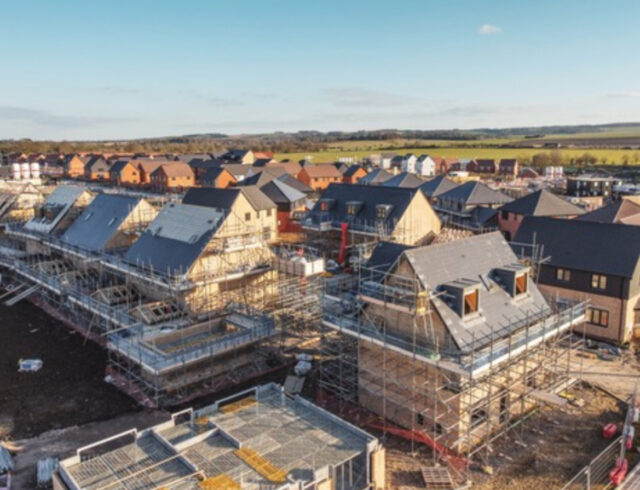The inaugural Planning Portal Market Index has found that more than a million homes granted planning permission since 2015 have not yet been built, equating to around a third of the total given the green light over the period. The figures cast doubt on the near-exclusive focus of the major parties on boosting housebuilding numbers by tweaking the planning system.
At the same time, planning applications over the first five months of 2024 are at the lowest level since 2020, calling into question the scope for housebuilding numbers to recover in the coming years to meet ambitious manifesto targets.
The Planning Portal Market Index report offers the most up to date statistics on planning applications in England and Wales, with data reflecting the state of play as recently as 31 May – two months later than the period covered by the most recent official statistics. The statistics are drawn from planning applications submitted to local authorities in England and Wales – more than 90% of which are made through the Planning Portal.
Had all homes granted planning permission ultimately been built, the government’s target of building 300,000 new homes a year would have been achieved in eight of the last 10 years.
Geoff Keal, CEO at TerraQuest, the operator of Planning Portal, said: “These figures suggest that the near-exclusive focus on the planning system in the political debate around housing is misplaced. Until recently, planning permission was being granted for enough new homes to meet the government’s targets.
“While the planning system is by no means perfect, and those homes granted permission could be in the wrong places, this data strongly suggests that policymakers need to look more widely at the factors stifling the completion of homes for which planning permission has been granted.”
The Planning Portal Market Index report highlighted the impact of high interest rates, skills shortages in the construction industry and materials shortages as possible culprits.
Geoff added: “High interest rates have a double impact on the completion of new homes. By dampening the housing market in the short term, they limit the potential commercial rewards available to housebuilders for proceeding with projects. At the same time, the high cost of borrowing to finance projects in the first place pushes up costs and eats into developer profits.
“This is compounded by the well-publicised challenges facing the construction sector in overcoming skills shortages that have left its headcount more than a quarter of million short of the number needed to meet projected demand. Meanwhile, the supply of fundamental construction supplies of bricks and blocks are down by 4.3% and 9.8% over the year to April, according to official statistics.
“Our analysis shows just how profound the challenges are for policymakers in ensuring enough new homes are built to meet the needs of a growing population.
Rosalind Andrews, Partner, Head of Planning, Highways and Environment at HCR Law, added: “The findings from the Planning Portal Application Index June 2024 report highlight the multifaceted challenges faced by the housebuilding sector. Increasing the delivery of much-needed homes across the UK is incredibly complex, with the number of residential planning permissions granted being only one aspect of the issue.
“Project viability is also a concern, given the increases in material costs and lending rates, as well as the new expenses associated with BNG requirements. Housebuilders are eager to commence construction and break ground.
“To meet the ambitious target of delivering 300,000 homes a year, it is crucial to address the industry’s capacity in terms of skilled labour. With the right support and training initiatives, the housebuilding sector can rise to this challenge and achieve these goals.”




